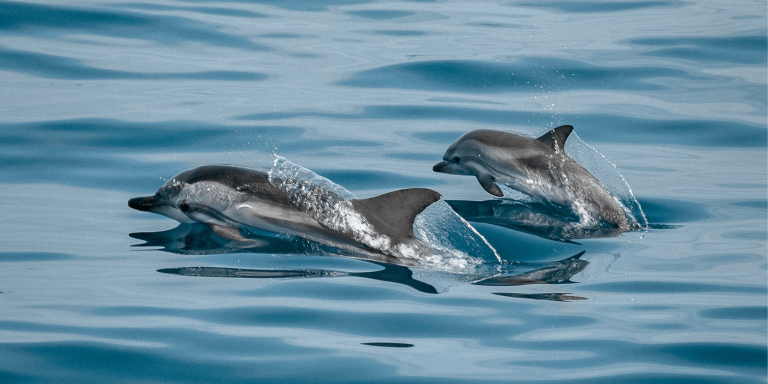
There are more than 30 species of dolphins in the world, the Māui dolphin, which lives off the west coast of the North Island, New Zealand, faces a threat of extinction. To save this rarest of the world’s dolphins, a nonprofit organization has been formed called MAUI63 (Marine Animal Unmanned Identification, with 63 representing the estimated number of Māui dolphins when this initiative began in 2018). The team’s scientists and conservationists use an AI-powered drone to locate, track, identify, and ultimately protect these and Hector’s dolphins.
The Māui dolphin population has declined further since the project began, as a 2021 survey counted only 54.
Hector’s and Māui dolphins are small coastal dolphins found only in New Zealand. Hector’s dolphins live primarily around the South Island, while Māui dolphins are only found on the west coast of the North Island.
Hector’s dolphin has been classified as nationally vulnerable by the New Zealand Threat Classification System (NZTCS), with a population of approximately 15,000, while the Māui dolphin is classified as nationally critical under the same framework.
Māui and Hector’s dolphins look very similar, they both have a rounded dorsal fin but Māui’s has a larger skull and slightly longer snout. Their reproduction is very slow, with a female giving birth to a pup every 2-4 years. The population of both species dropped sharply in the 1970s with the advent of gillnets and trawling.
In 2008, a Hector’s and Māui’s dolphin threat management plan was developed by DOC (Department of Conservation) and Fisheries New Zealand, the Ministry of Fisheries. A variety of actions have been put in place, including restrictions on industrial and recreational fishing, the establishment of marine mammal sanctuaries, and, most recently, an action plan against toxoplasmosis, which is estimated to kill approximately two Māui dolphins each year. Toxoplasmosis is a disease caused by a parasite that lives in cat feces that ends up in the sea through runoff.
The MAUI63 Project
The MAUI63 project was formed in 2018 by Tane van der Boon, software designer, CEO and technical lead, Willy Wang, operations manager and drone enthusiast in collaboration with Rochelle Constantine research manager and marine science extraordinaire, Associate Professor at the University of Auckland.
Pete Carscallen, a professional commercial pilot, has joined the team as Chief Pilot and brings a strong aviation background. The 5th team member is Hayley Nessia, a marine biologist trained in drone piloting.
Four years of development, testing and fundraising
The MAUI63 project aims to:
- Find and track dolphins via surveys to create accurate spatial distribution patterns;
- Reveal temporal changes in dolphin movement patterns;
- Use data to inform threat risk models informed by natural (shark predation) and anthropogenic (fisheries, climate change, toxoplasmosis) factors;
- Uniquely identify individuals through fin tags;
- Distinguish between adults and juveniles.
Development was facilitated by funding through the New Zealand National Cloud and AI Plan, which funds projects with sustainable societal impact, as well as support from Microsoft Philanthropies ANZ.
The rounded fins of Māui dolphins differ from the sharper fins of other dolphins so existing computer vision models were not suitable for identifying Māui dolphins. Tane van der Boon spent several months building a model that he trained on images of Māui dolphins found on the internet. The initial computer vision AI model is operational as of 2019.
The solution combines an ultra-high-definition 8K fixed camera and a Full HD gimbal camera with an object detection model to spot dolphins and an open-source algorithm, originally developed for facial recognition. Hosted on Microsoft Azure, it collects data that will be used to identify individual animals by the shape and size of their dorsal fins and the stripes and markings on them.
MAUI63 plans to make its learnings and technology available for research for other marine species, including a potential project in Antarctica with the Environment Council of the European Union.
Translated from Nouvelle-Zélande : l’intelligence artificielle vient au secours des dauphins de Māui









